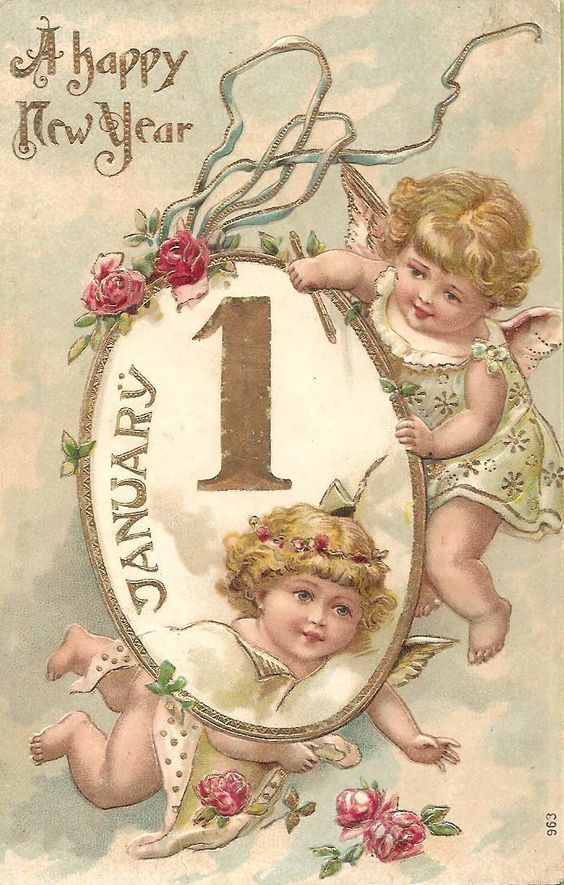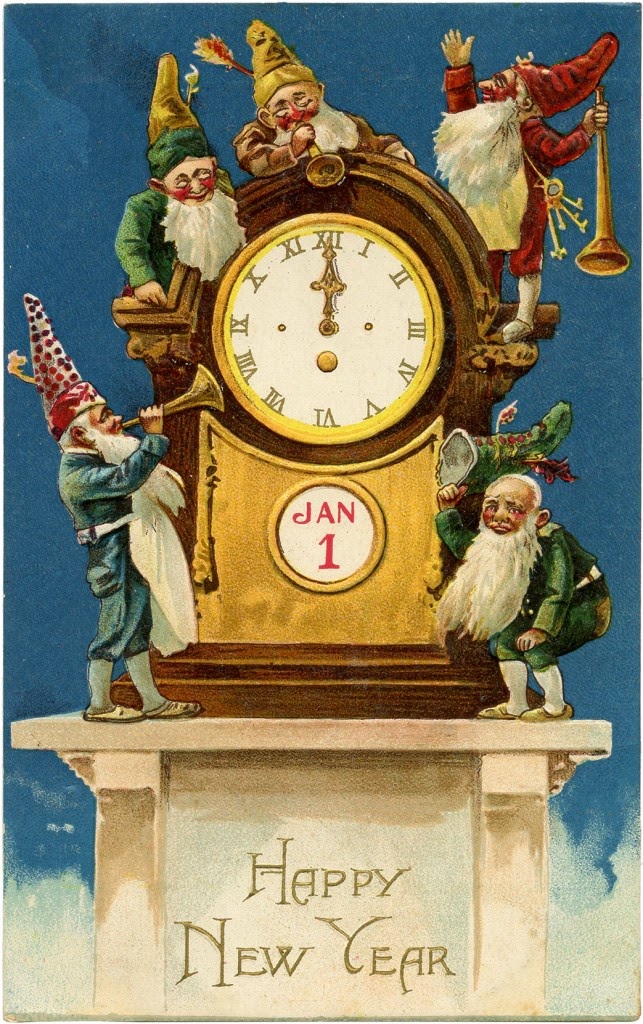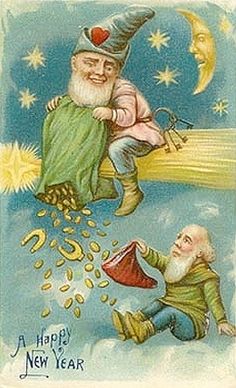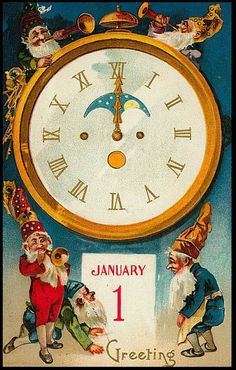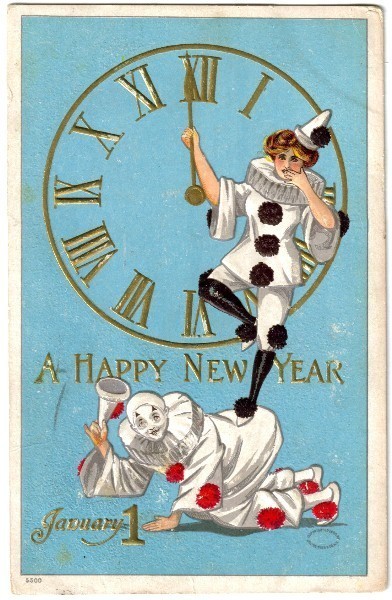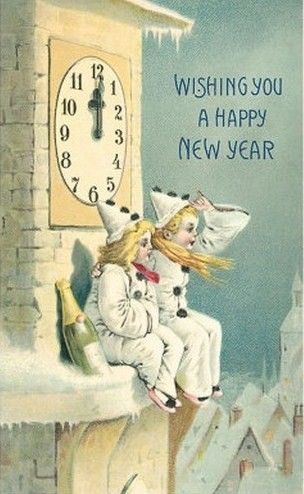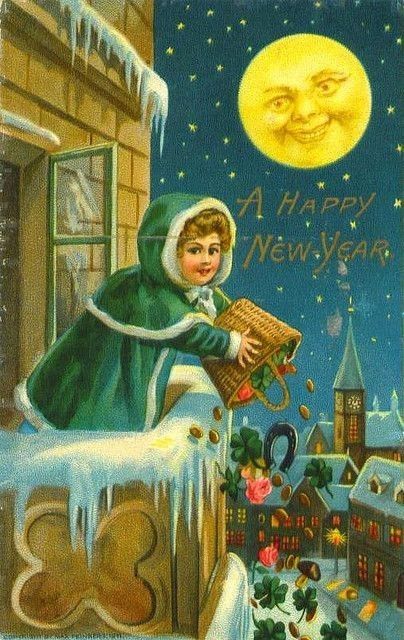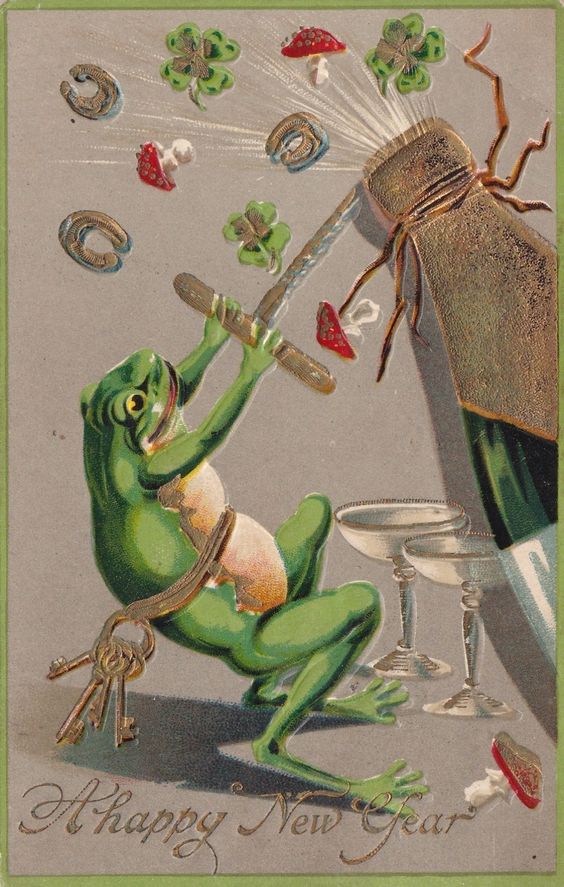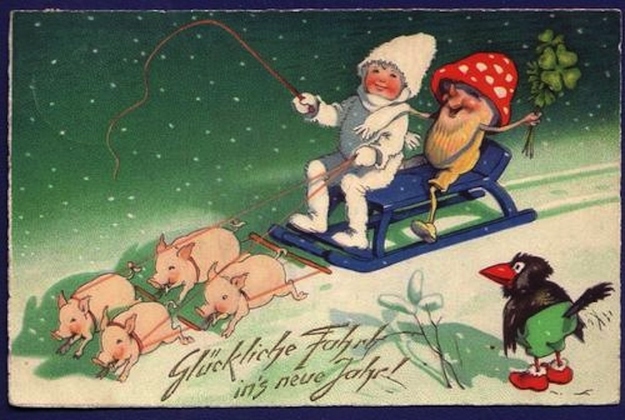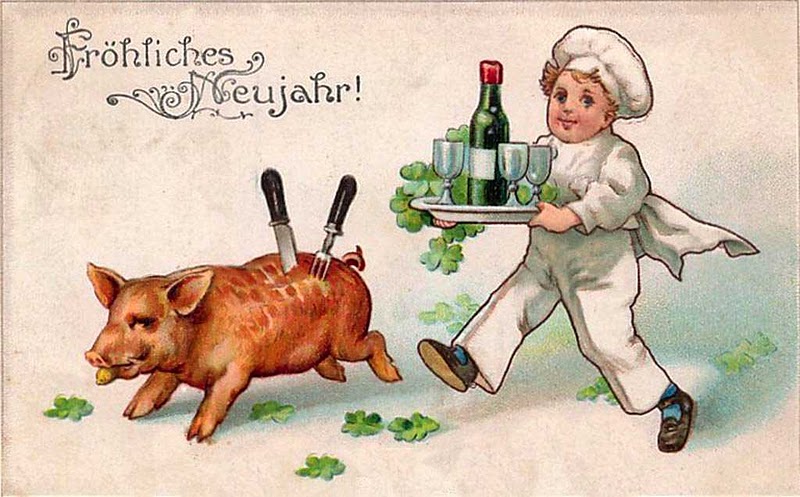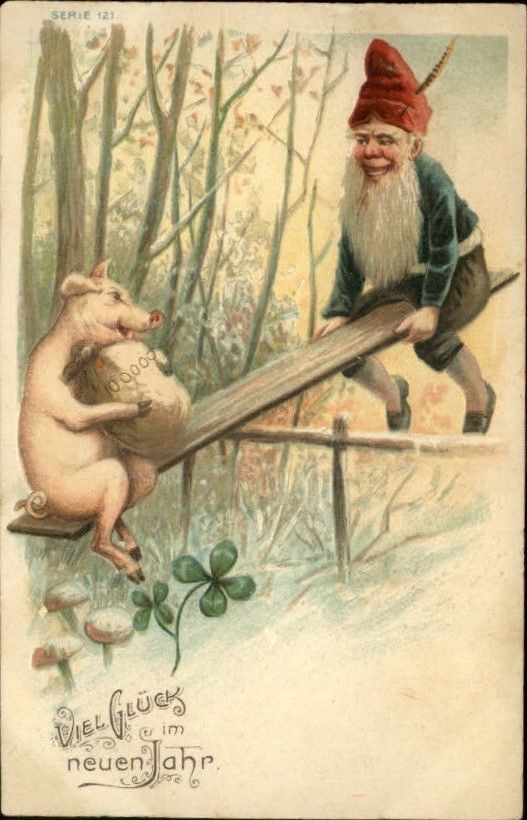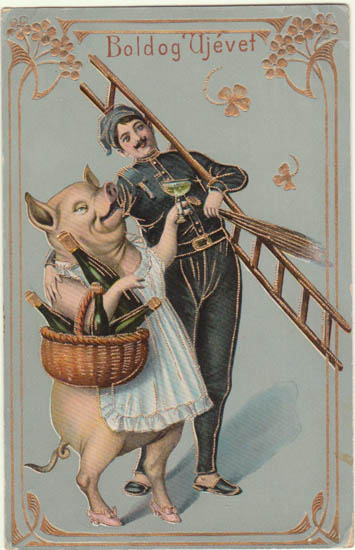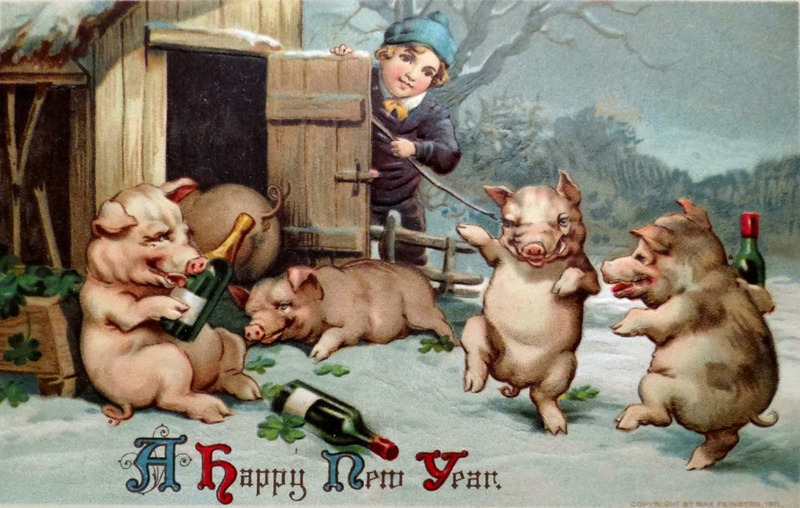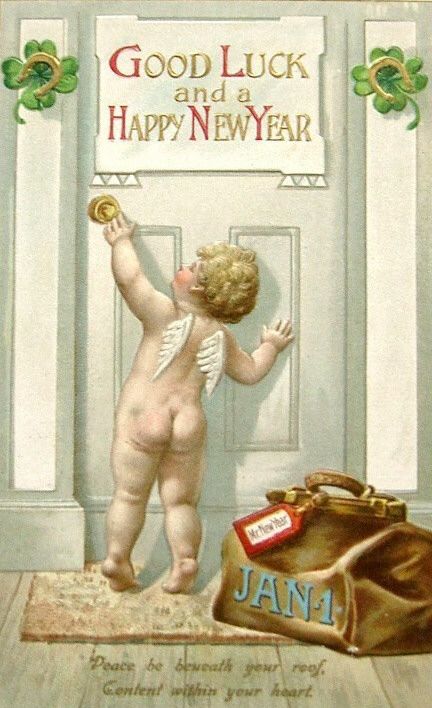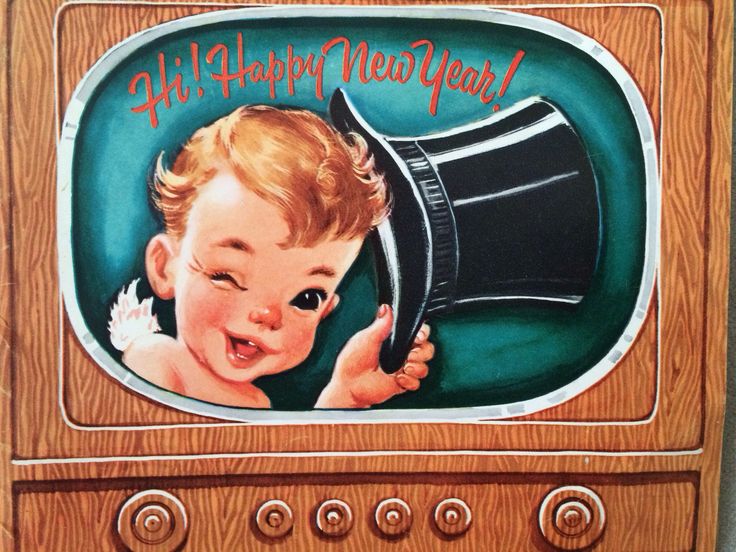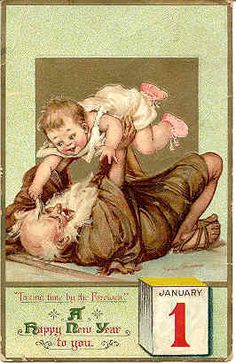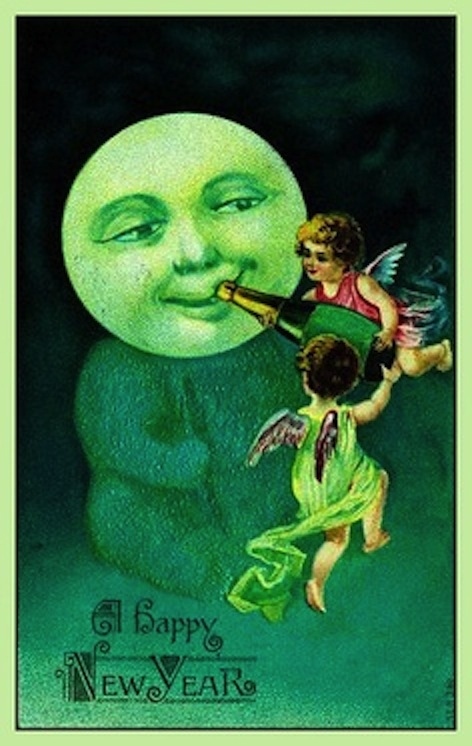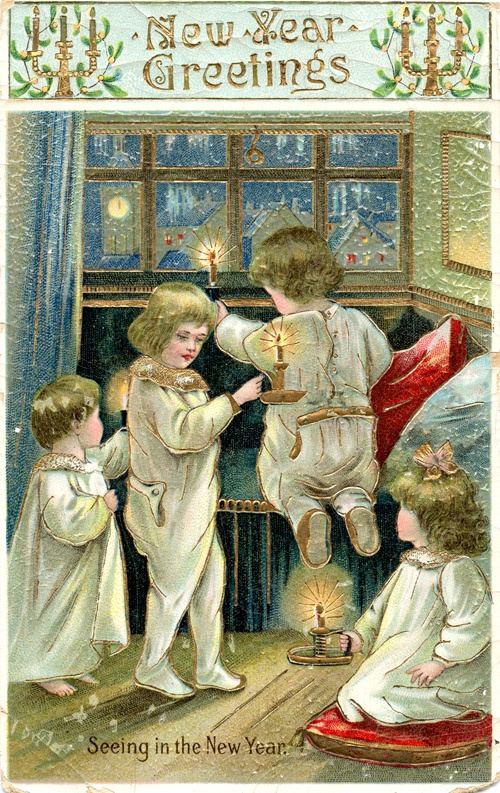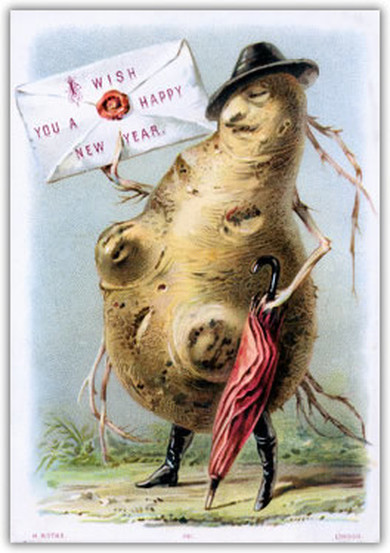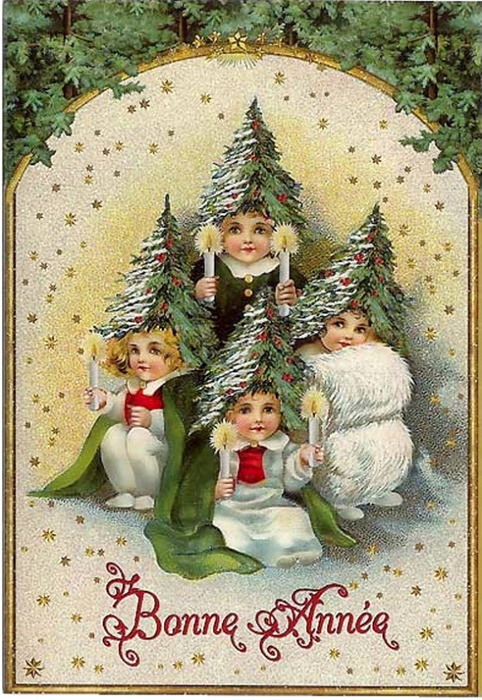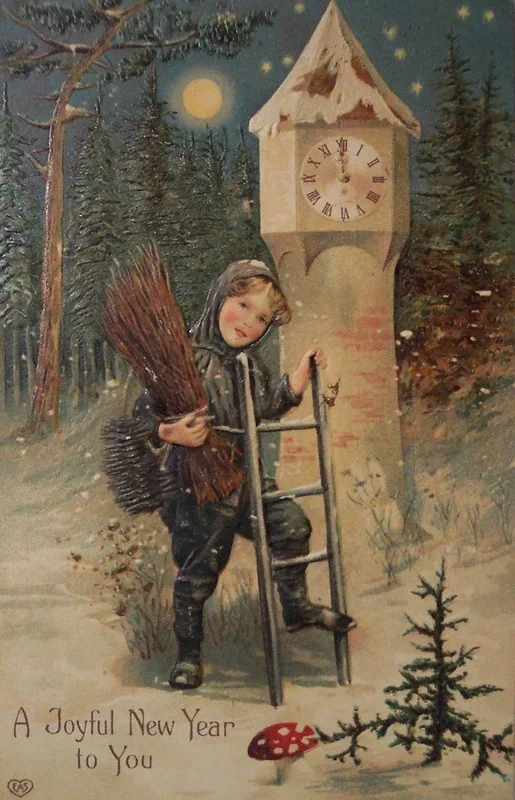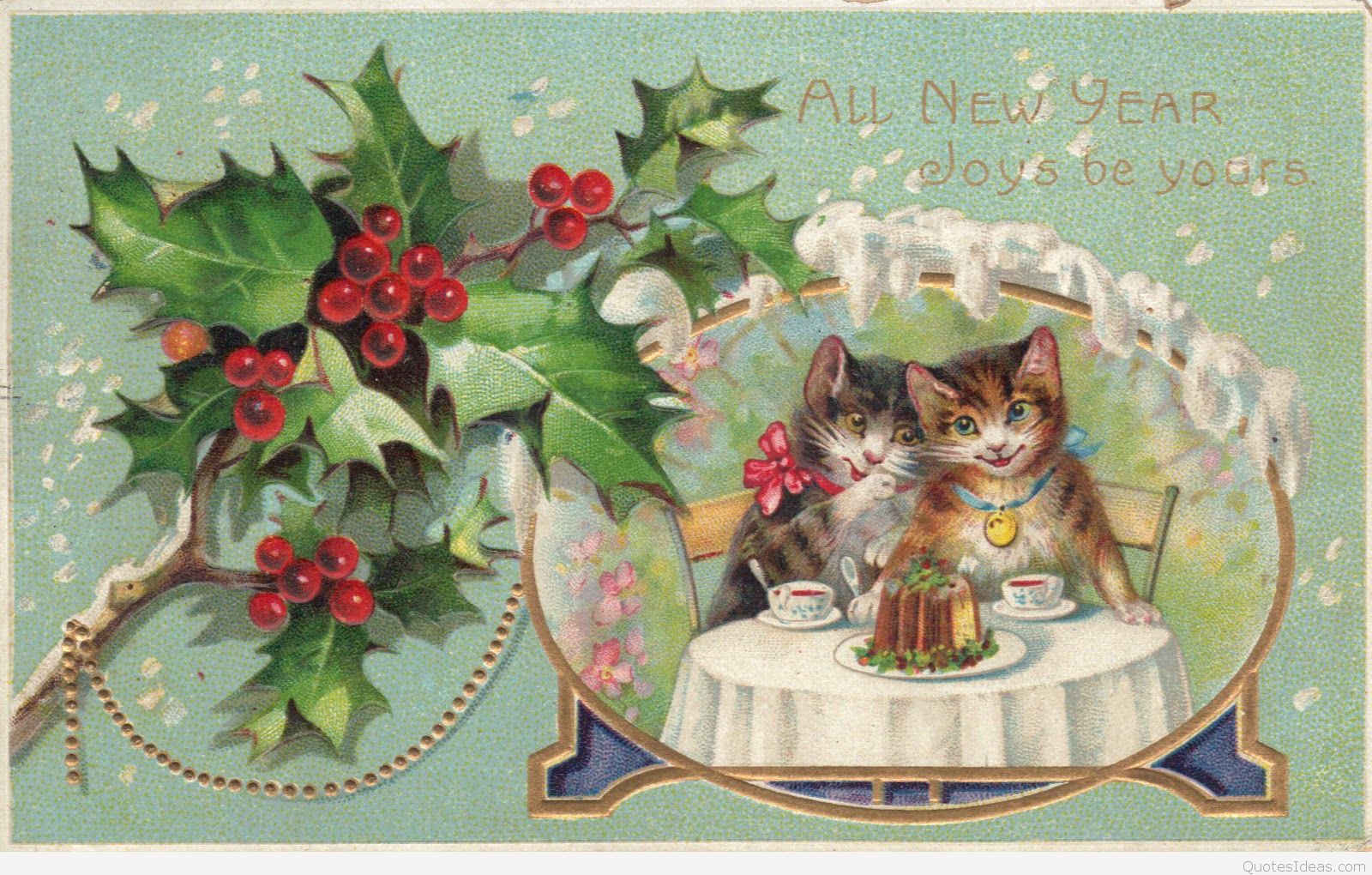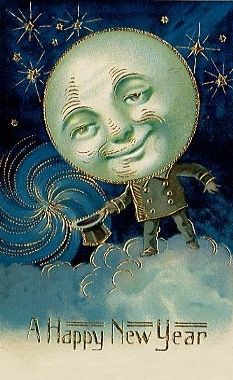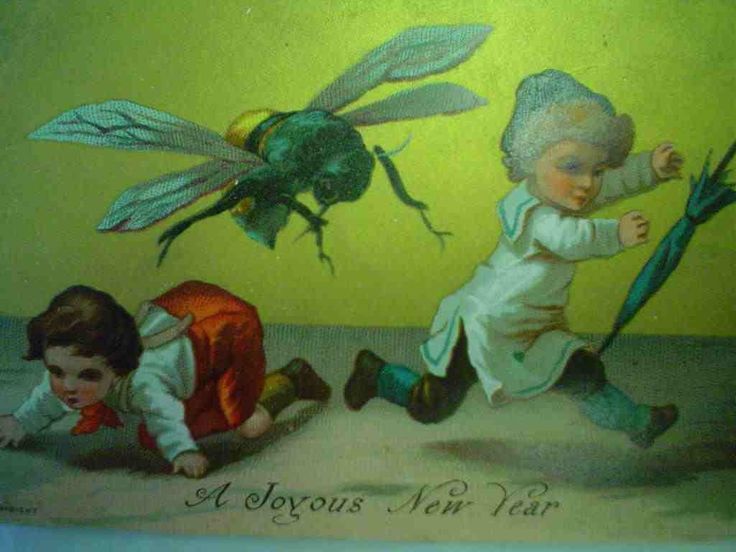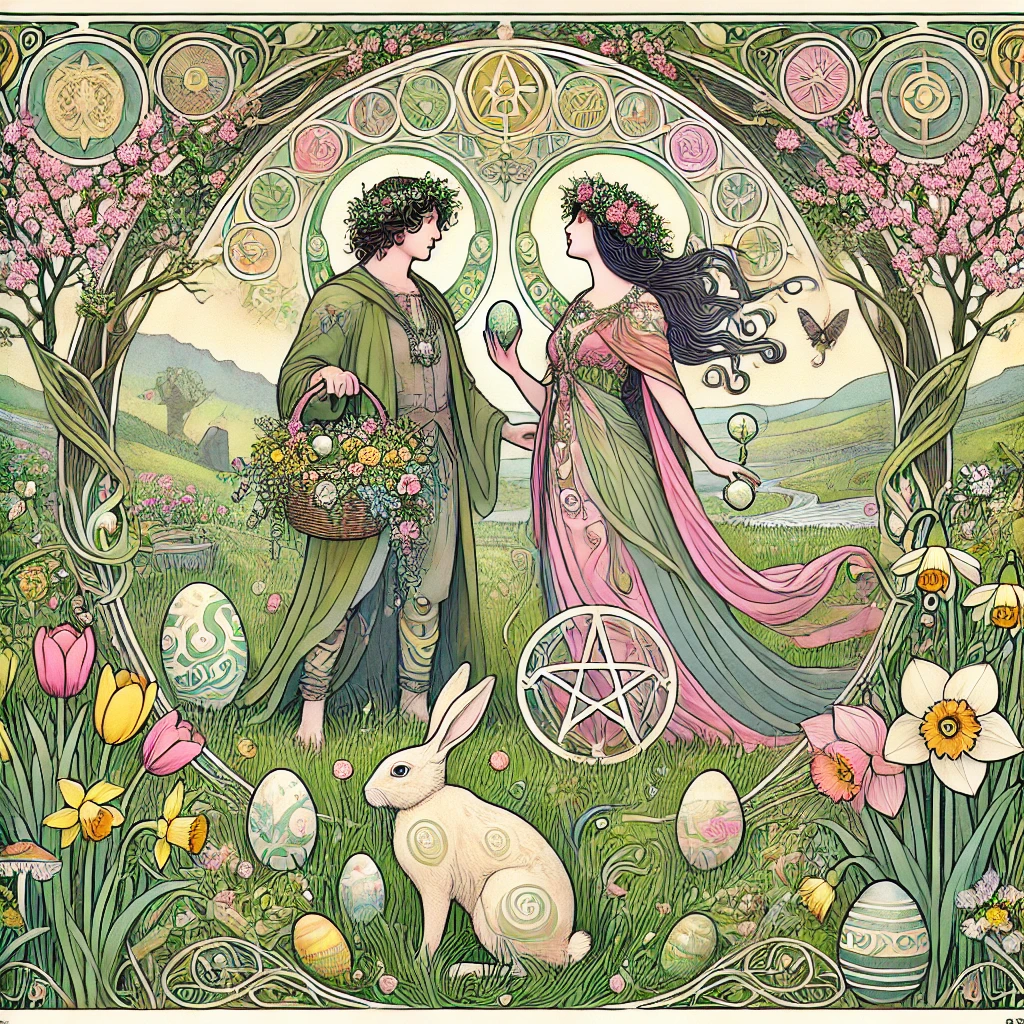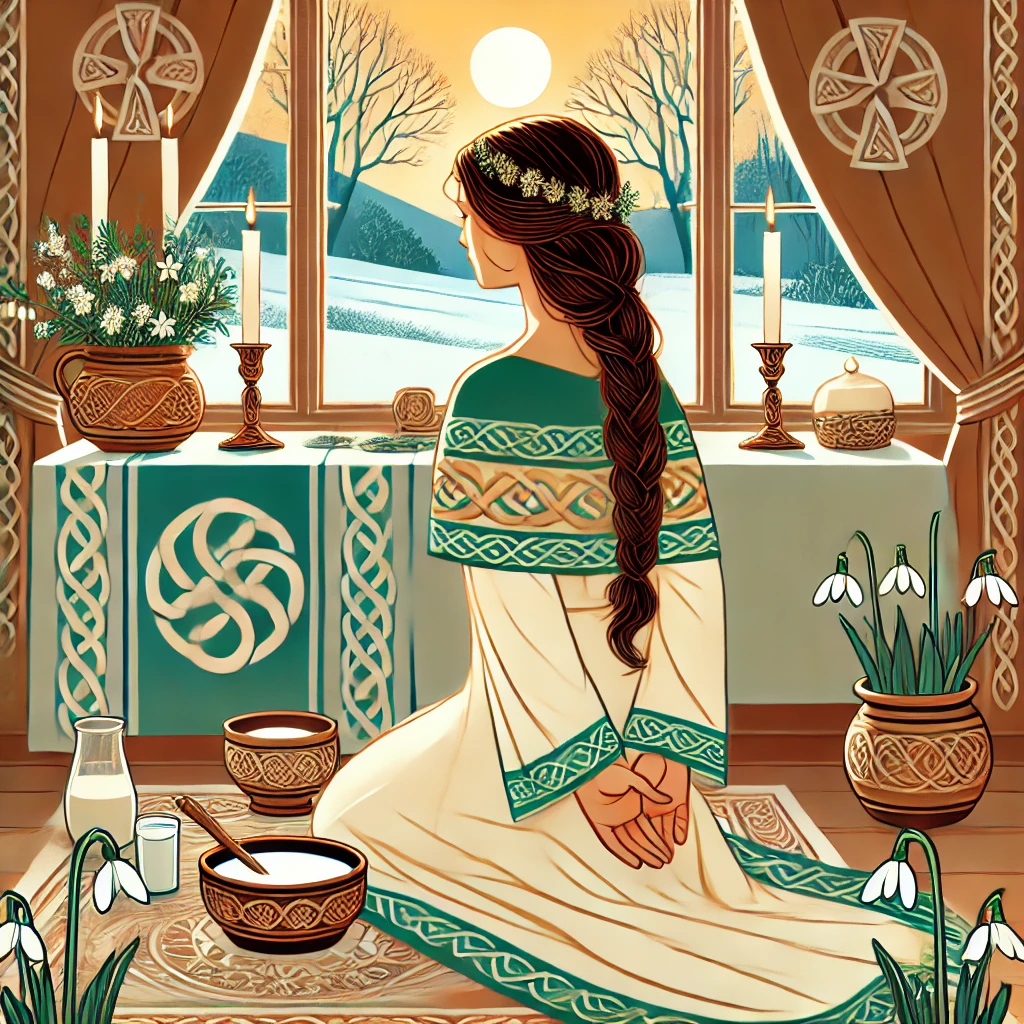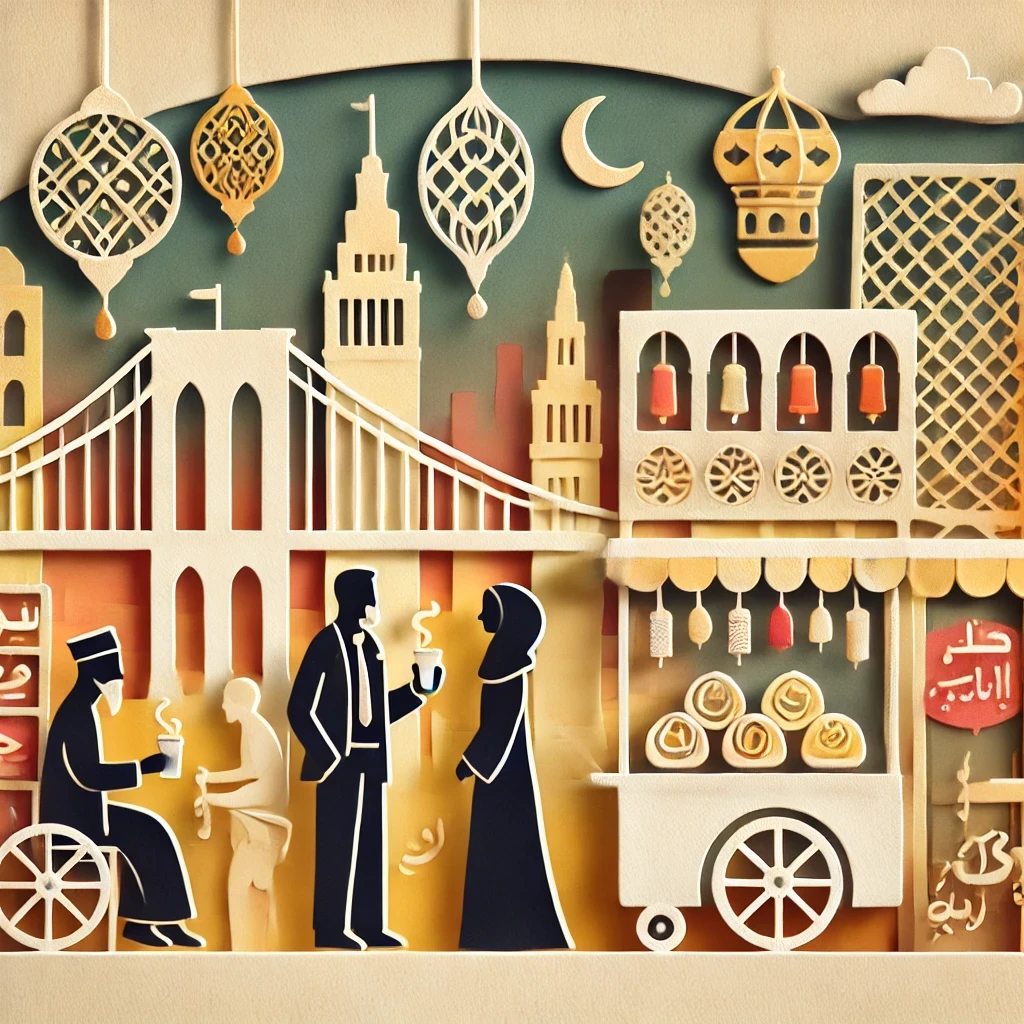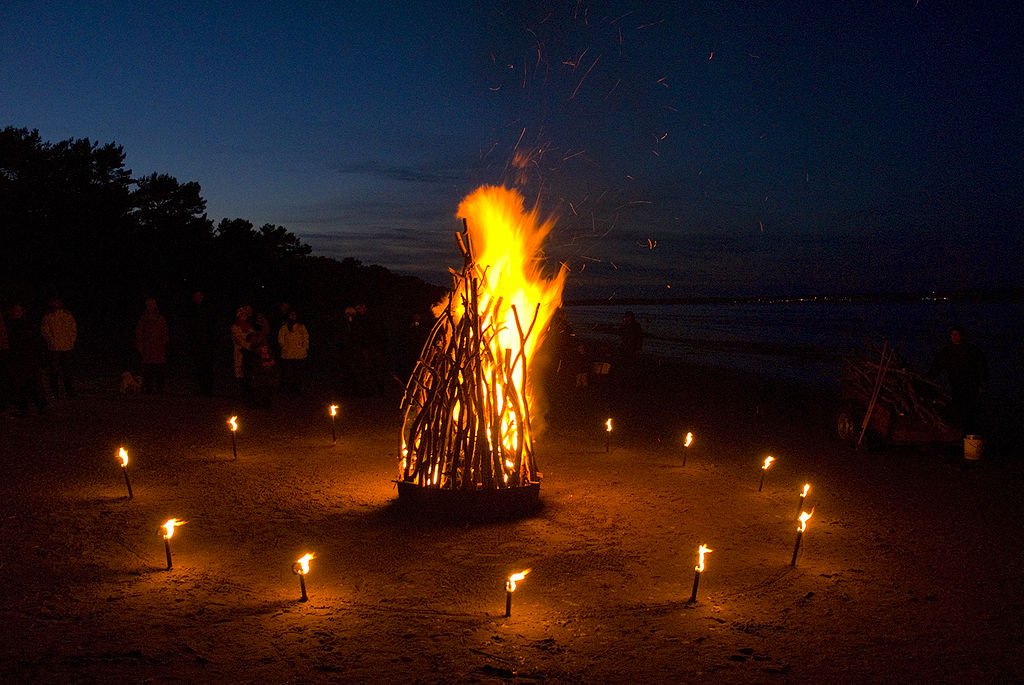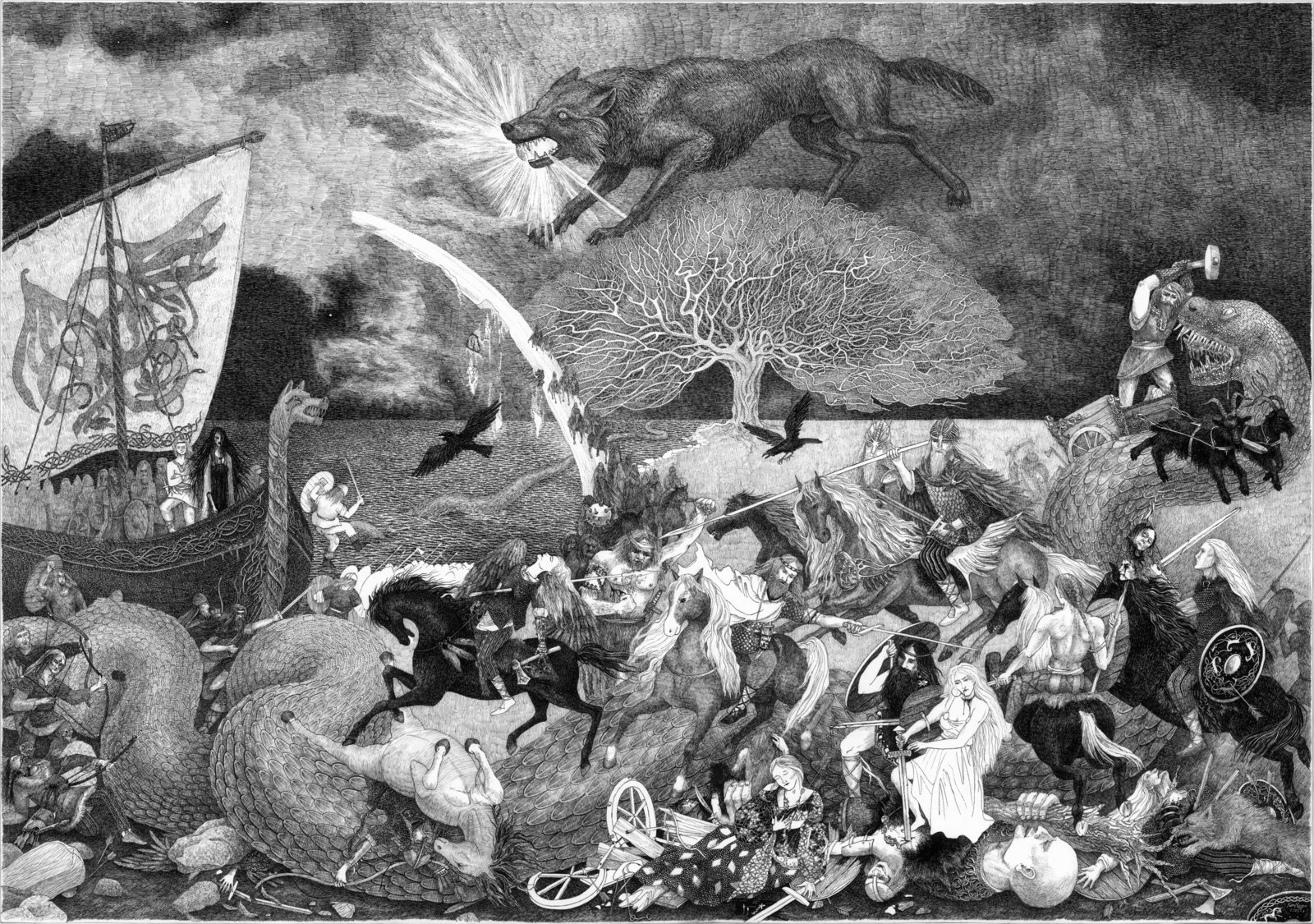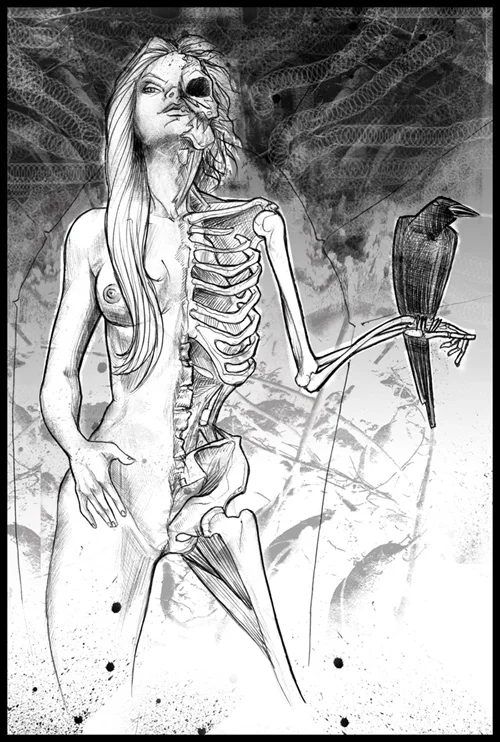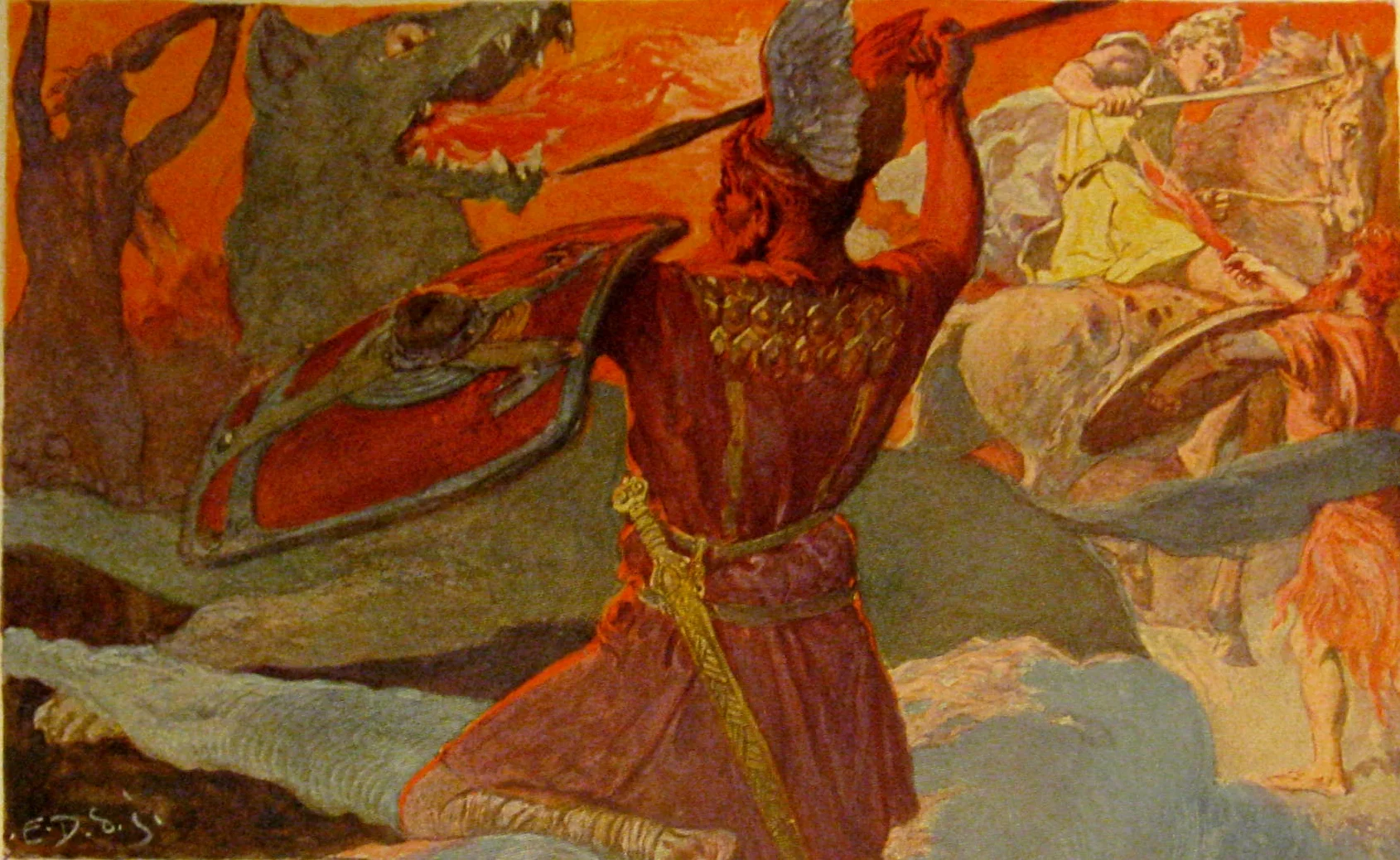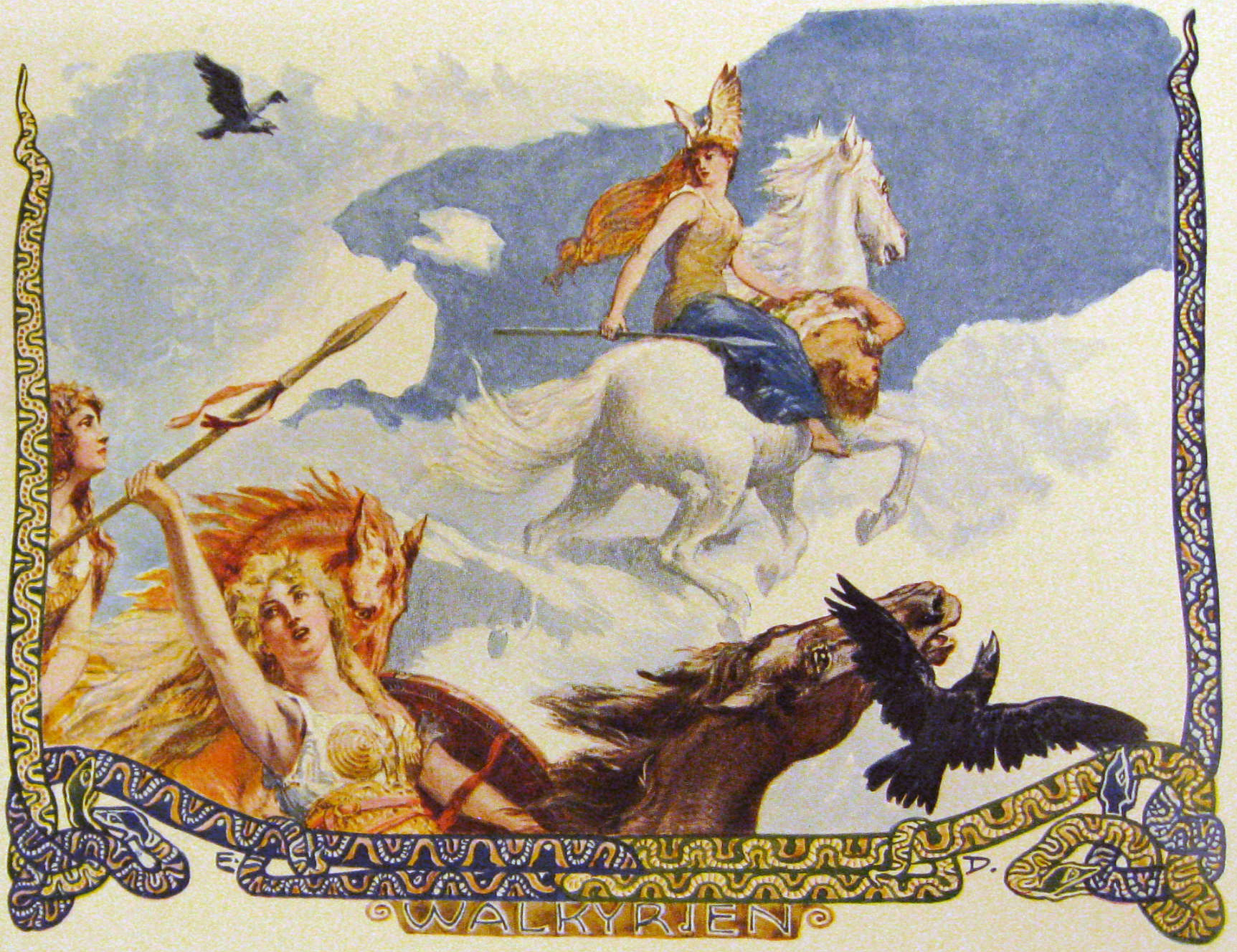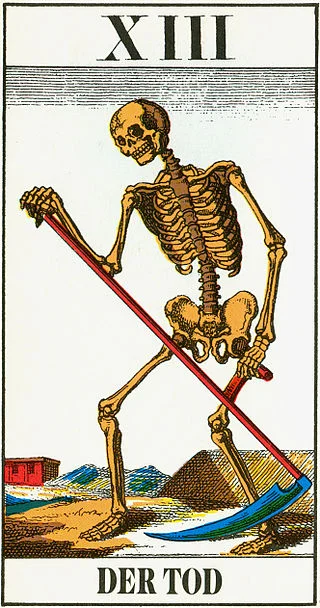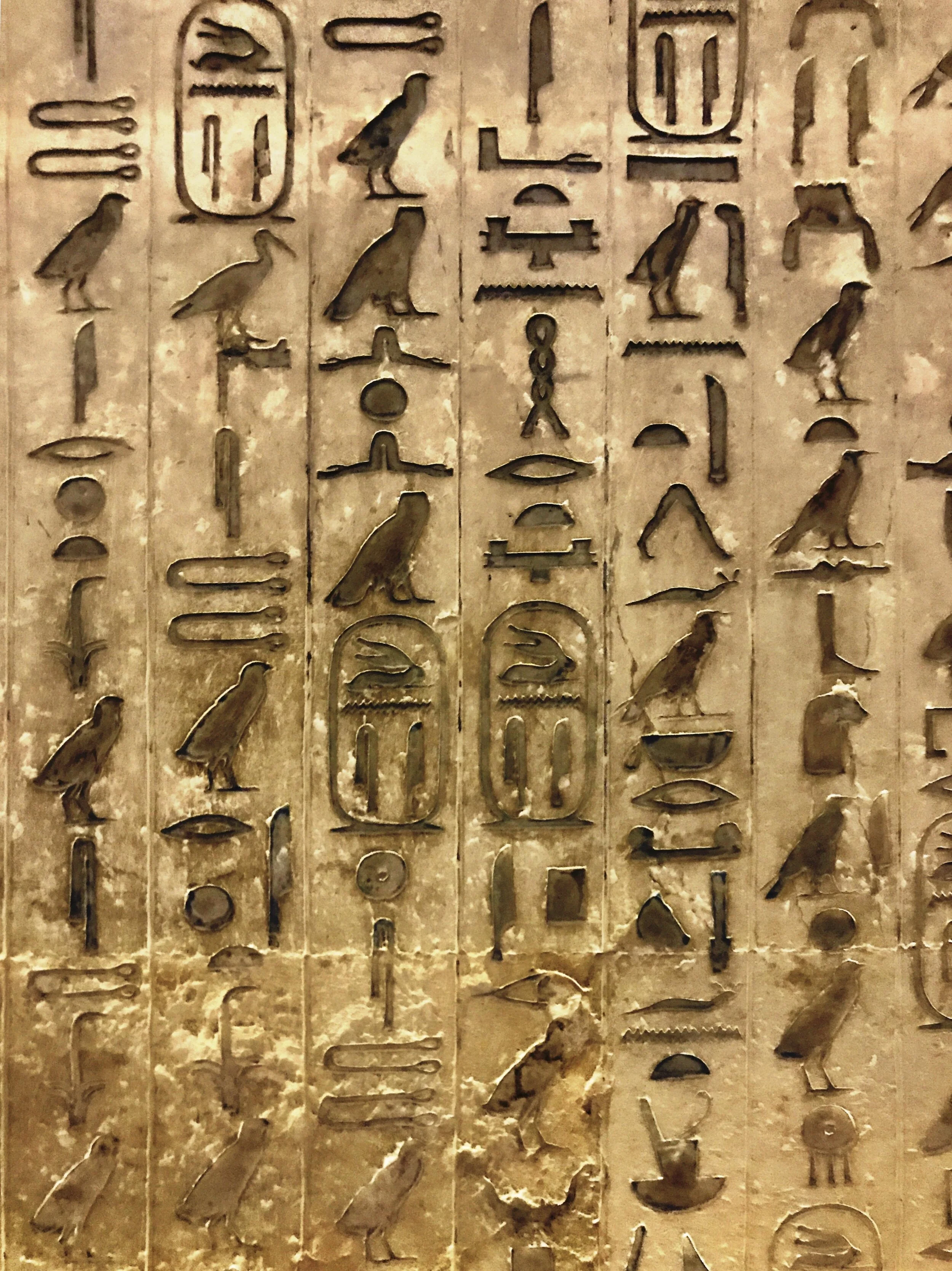Pierrot clowns, dwarves, pigs and cherubs helped ring in New Years past.
May the New Year come crashing in…in the most adorable way
The new year is a time to let go of our bad habits and make some sort of effort to improve ourselves. It’s a time of optimism, when the new year spreads out before us as a blank slate. Any unpleasantness from the past year can be left behind.
So it’s not surprising that people used to send New Year’s greetings that were filled with symbols of good luck and promise. On these vintage cards, you’ll see kids enjoying bottles of champagne (that effervescent boozy beverage is still the tipple of choice on New Year’s Eve).
“For some reason, Germans viewed pigs as signs of prosperity, so you can see porkers cavorting all over these old-time cards.”
There are also quite a few depictions of bearded humanoids. The cards with dwarves were typically created for Scandinavians, particularly the Swedish. These magical diminutive creatures are symbols of luck. Indeed, you can see them holding bags of coins.
Other European countries incorporated their magical creatures (elves, gnomes and the like) into their New Year’s cards.
Another character making an appearance on vintage New Year’s cards is the clown with poofy balls on his costume known as Pierrot. While clowns are often sources of mirth (even though plenty of people think they’re creepy as hell), Pierrot is a sad clown, desperately in love with a woman named Columbine, who breaks his heart and takes up with the dapper Harlequin. I’m not sure why they became associated with the holiday, but it’s a depressing way to kick off the new year.
Good luck symbols are found all over these cards, including horseshoes, mushrooms and four-leaf clovers, which have migrated from New Year’s iconography to St. Patrick’s Day.
For some reason, Germans viewed pigs as signs of prosperity, so you can see porkers cavorting all over these old-time cards.
And of course there are the most popular New Year’s characters: “The symbols for the New Year are Father Time, hoary with age, being replaced by the newborn child,” writes Pamela E. Apkarian-Russell in her book Postmarked Yesteryear: Art of the Holiday Card. “It is the retelling of the King who dies only to be replaced by a younger and stronger ruler. It is the story of the Phoenix shedding its beautiful feathers and then bursting into flames only to be reborn from the ashes on his self-induced pyre. It is senility and decay replaced by virility.”
Take a spin through these sometimes strange but often sweet vintage New Year’s cards, most of which come from the early 1900s. May your New Year be filled with mushrooms, pigs and small bearded men. –Wally

